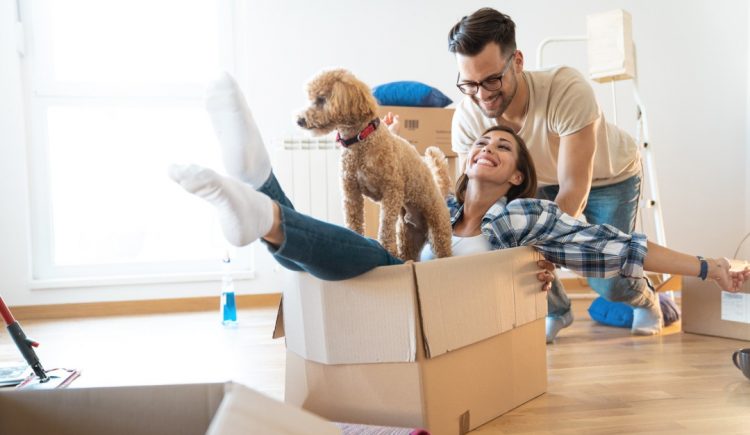Moving is stressful for everyone — pets included. Moving can greatly impact your pet from the chaos of boxes, changes in schedules and a new environment. Taking steps to ease your pet’s anxiety about this significant change can help them better transition into a new home. Read on for tips on moving with pets.
Prepare an Overnight Pet Kit
When you’re packing to move, pack a small box with the immediate items they will need once they are in the new house. This may include food, kitty litter, toys, grooming tools and pet beds.
Book Pet Care Accommodations
During the move, book pet care accommodations so your pet can be in a safe place away from the chaos of moving day. This will help prevent your pet running out of the open doors. It will also protect them from the stress of movers coming in and out. If you don’t have boarding accommodations, try to keep them out of the action, keeping them in a quiet room that is adequately ventilated with plenty of food and water.
Contact the Veterinarian
If you’re moving out of the area, contact the veterinarian’s office, to transfer your pet’s medical records and any medications to the new vet’s office. Ask them if they have recommendations for a new vet if you’re moving far away.
Set Up the House Before You Bring Them Inside
Have the more oversized furniture and most of the house set up before bringing your pet inside. Eliminating as much chaos as possible will help lessen the stress on your pet. The familiar scents of your furniture and other belongings will also provide comfort.
Slowly Introduce Them to the New Home
When you first arrive at the new house, don’t open their kennel until they are safely inside so they don’t run off. If you have a larger dog, make sure to leash it as it explores the yard. Before bringing your pet to the house, set up their area with their food and water bowls and a few of their favorite toys.
Update the Tags and Microchip
Post-move, update your pet’s ID tags and microchip information to include your new address in the event your pet runs off in an unfamiliar area.
Pet-Proof the House
Pet-proof the new house by hiding electrical cords, ensure the window screens are secure, no cleaning agents have been left behind and no pest-control traps have been left anywhere. If there are areas you don’t want your pet to enter, install baby gates or boxes to barricade these areas temporarily.
Assess the Exterior
Review the house’s exterior to ensure there aren’t any poisonous plants on the property, and contact an electric fence company if you plan on allowing your pet to stay outside. Or, if your neighborhood can have fences, you may want to fence your backyard to allow your dog to run freely.
Walk the Neighborhood
Walk your dog frequently throughout the new neighborhood to establish familiarity and be on the lookout for any potentially aggressive dogs nearby. Learn your area’s leash laws to learn if you can let your dog off leash or if it must stay leashed the entire time.











